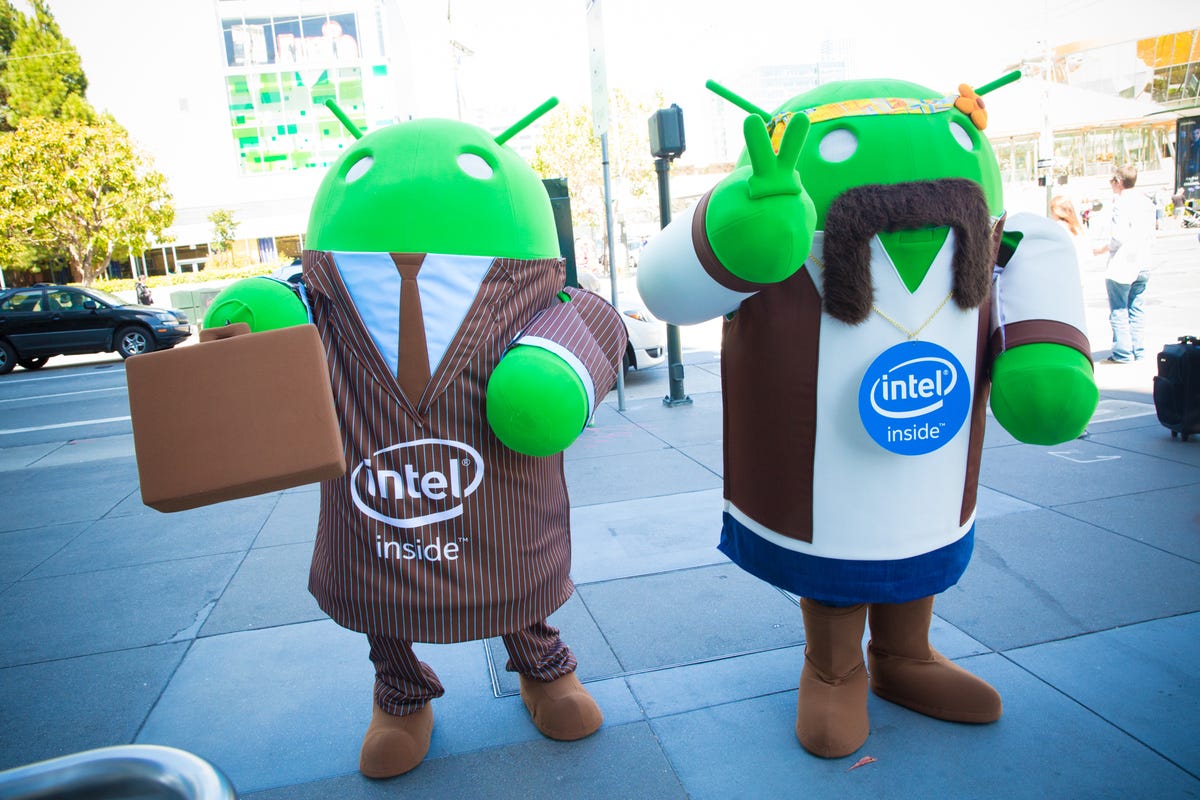
James Martin/CNET
Google, after failing to score a hit with its prior TV projects, hasn’t given up on the living room just yet.
The Mountain View, Calif., company is working with partners to produce several television set-top boxes that run its Android software, people familiar with the matter said. The devices will let users view content, listen to music, and play games on their television sets, they said.
Google plans to reveal at least one set-top box and new Android software for TVs on Wednesday at its Google I/O developer conference in San Francisco. Along with its TV efforts, Google also will show off new Android Wear smartwatches from partners such as Samsung and LG, as CNET reported, and talk about its efforts in cars and other areas.
Catch CNET’s live coverage of the Google I/O 2014 keynote on Wednesday at 9 a.m. PT.
This latest move to bring Android to TVs marks at least Google’s third major foray into the television industry. The company’s previous attempts, including its Google TVs in 2010, have fallen flat, with former partner Logitech calling its Google TV ” a mistake of implementation of a gigantic nature.” Many Android partners — including Samsung and LG — now rely on their own software to drive their TVs and set-top boxes.
See also
- Samsung to launch Android Wear smartwatch at Google I/O
- Google vies for coders’ hearts and minds at Google I/O
- Larry Page’s stamp on Google: More than moon shots
For Google, though, the large market for smart TVs and streaming media boxes makes it worth another try. While TV sales have been sluggish, sales of devices that plug into televisions and play video and music are expected to jump to 330 million units by 2017, double the tally from last year, according to market researcher Parks Associates. More than 50 percent of US households connect their TV to the Internet in some fashion, the researcher also said.
The market potential is luring consumer electronics giants, including Apple, whose $99 Apple TV set-top box grew from a “hobby” product in 2007 to a $1 billion business in 2013. Amazon also announced its own set-top box, the $99 Fire TV, in April.
Google’s numerous attempts to upset the industry started with the release of Google TV at its 2010 developers conference. Google TV initially promised full access to the Web and easy listings searches through set-top boxes and TVs from companies such as Logitech and Sony. It never took off, though, because popular sites like Hulu and networks like ABC blocked their content. The Google TVs also were criticized for being too complicated and expensive.
Google I/O 2014 is here (pictures)






+9 more
Google tried again the next year, ditching initial chip partner Intel for Marvell and updating its software to make it simpler. The October 2011 software update also improved the way people could simultaneously search for content on live TV, Google’s YouTube video site, and video-streaming sites such as Netflix. It also struck new deals with electronics makers such as Vizio to bring new Google TV-powered devices to market in 2012. That effort also flopped.
Google most recent push came last year with Chromecast, a $35 dongle that plugs into TVs and streams content from a user’s smartphone, tablet, or computer. Initial sales appeared strong among consumers, but usage of the Chromecast may be dwindling after an initial surge of curious interest, according to data from Parks.
This year’s attempt will be more-well rounded, people familiar with the matter say. At least one of the devices will be powered by an Nvidia Tegra 4 processor, suggesting strong ties to the video game industry. That chip was used in Nvidia’s Shield, an Android-based handheld video game device released a year ago.
Other Android-powered set-top boxes are in the works with Intel chips, people familiar with the matter said.
Google didn’t immediately respond to a request for comment. Intel and Nvidia declined to comment on Android TV.


James Martin/CNET
Intel was Google’s first processor partner for Google TV, and Nvidia has long supplied chips for gaming. A previous version of Nvidia’s chips, the Tegra 3, powered the Ouya, a set-top box also released last year that now counts more than 840 games in its library. The $99 device pulled in nearly $8.6 million in funding through a Kickstarter campaign. Ouya has become a darling of independent video game makers and has expanded to offer its store of games to other devices. It hasn’t announced any sales data, however.
How seriously Google plans to sell its video game capabilities is still unclear. When Amazon released its Fire TV set-top box, it offered an optional game controller and showed off a new title, Sev Zero, which was built by its in-house development teams. The company hasn’t since discussed sales or usage among customers. Amazon didn’t immediately respond to a request for comment.
No matter how much Google discusses games, streaming content will be a must-have for the device. Typically, new set-top devices and platforms aim to launch with at least a few splashy content partners already on board, such as popular music-streaming services like Clear Channel’s iHeartRadio and Pandora or major streaming-video companies like Netflix.
Google’s record has been hit-and-miss: When it unveiled its Chromecast streaming dongle in July, it included just Netflix and Google’s own media businesses like YouTube and Google Play in the lineup. Support for Pandora, Hulu, and others did not arrive until months later.
CNET’s Joan E. Solsman contributed to this report.




